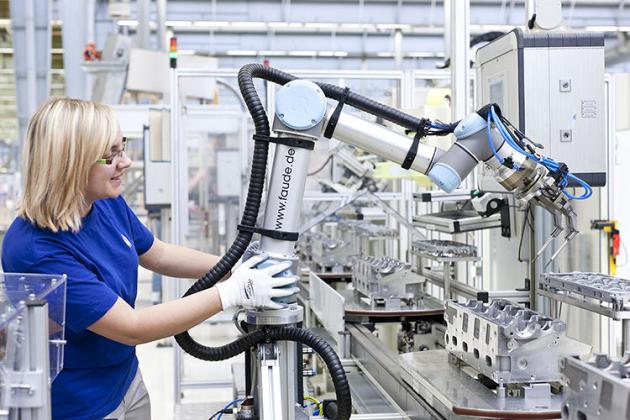Volkswagen Is Using Collaborative Robots To Relieve Workers From Stressful Jobs. Will They Be Stealing Our Jobs Too Soon?
2013.09.10

The workplace today is very different from "back in the day". From letting automation do all the work, it looks like the massive industrial robots are now being paired together with humans. Can we really work together with them? Are they no longer dangerous?
Last week, the automaker Volkswagen announced it has started up its first “collaborative robot” at its production plant in Salzgitter, Germany. The company's lightweight robotic arm won't be sitting in a cage anymore, instead, it will work next to humans in the cylinder head assembly section and will be responsible handling a delicate part of the job called glow plug.
The robot - called UR5, will take the job of inserting the glow plugs away from two employees. According to Volkswagen in a press release, it would release staff from“ergonomically unfavorable work”:
“We would like to prevent long-term burdens on our employees in all areas of our company with an ergonomic workplace layout. By using robots without guards, they can work together hand in hand with the robot,” said Jurgen Hafner, project manager at Volkswagen's Salzgitter plant, calling the UR5 essentially a production assistant.

Of course, VW isn't the first company to marry man and machine. The Danish firm that makes the UR5 aims to “easily automate monotonous and laborious processes,” says it is the only company to currently sell robotics arms that are allowed to work uncaged in an auto factory.

BMW and Boeing have been using collaborative robots for a preliminary stage already. In one example,Boeing has been working with academic researchers on developing smarter robots that can help workers assemble an aircraft wing.
Will this really help workers? Will there be any injuries? What are the risks involved? And more importantly, will this render humans obsolete in the manufacturing line?
More Articles
Copyright © Fooyoh.com All rights reserved.